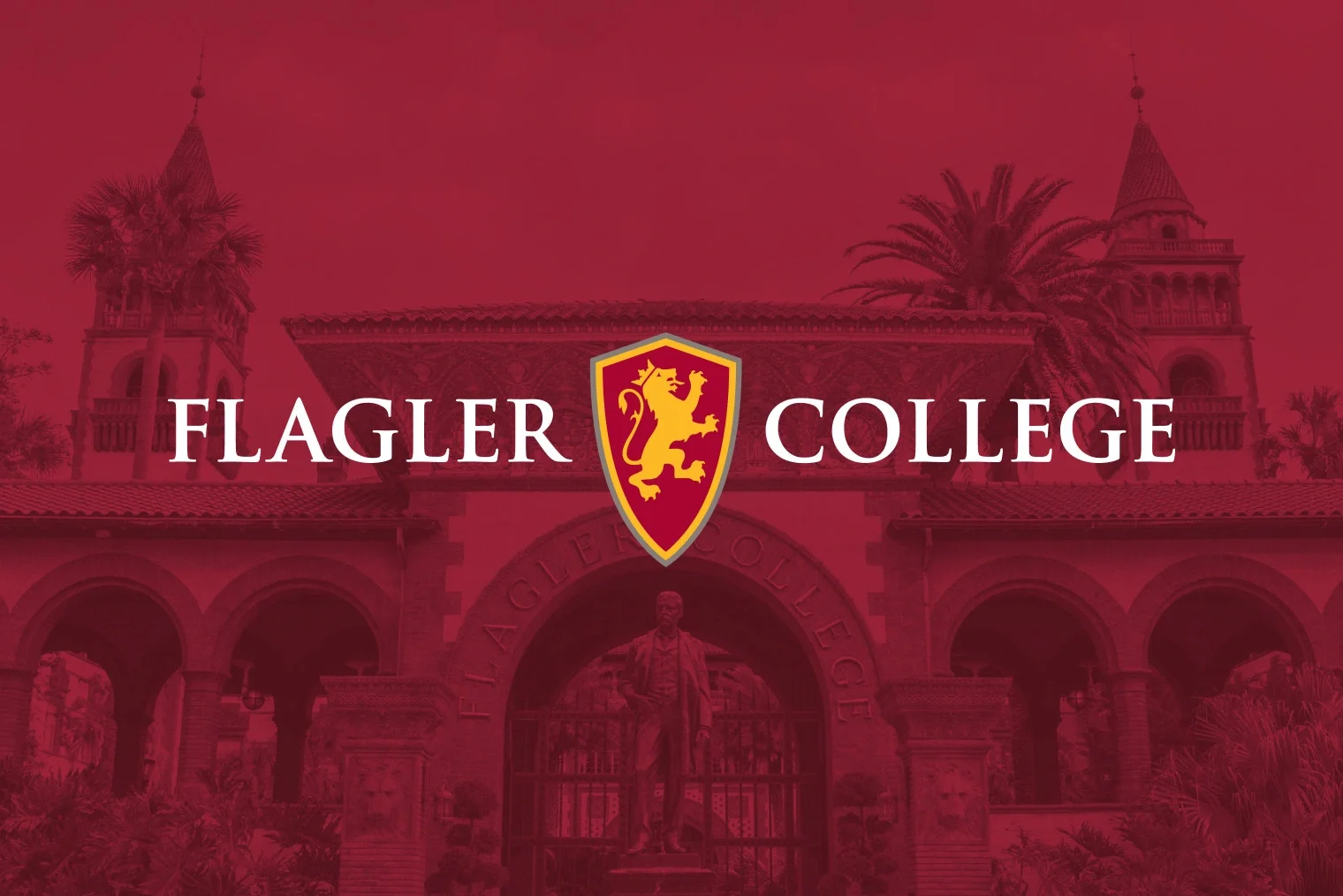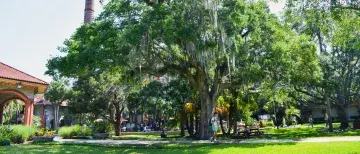
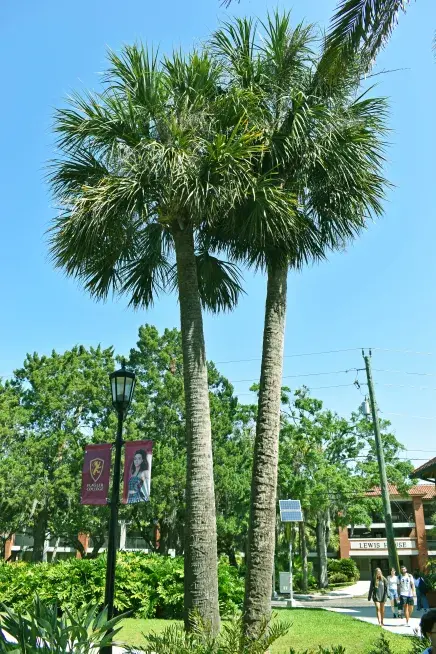
Today, the campus boasts an impressive “urban forest” with native species like Florida’s State tree, the Sabal Palm (see right), as well as other benign non-native trees. In Fall 2024, Flagler conducted a detailed tree survey, mapping each tree with a GPS app to record its type, size, and health.
Before the Hotel Ponce de Leon was built, however, the College grounds had a different forest composition.
“Most of the northern part of the city was orange and pecan trees,” noted local arborist Eddie Conlon, reflecting on St. Augustine's landscape before Henry Flagler built the Hotel Ponce de Leon.
Conlon, owner of Tree Medic Tree Surgeons Inc., started working with the College in 1994 after servicing trees for faculty and staff.
“I worked for a couple of professors at their homes, as well as President Abare and Dr. Proctor,” Conlon recalls. “I was mainly working on the care side of trees at that time [as a certified arborist], and they called me out when they were building the gazebo.”
The first tree Conlon worked on was the Live Oak at Markland House, likely the oldest on campus.
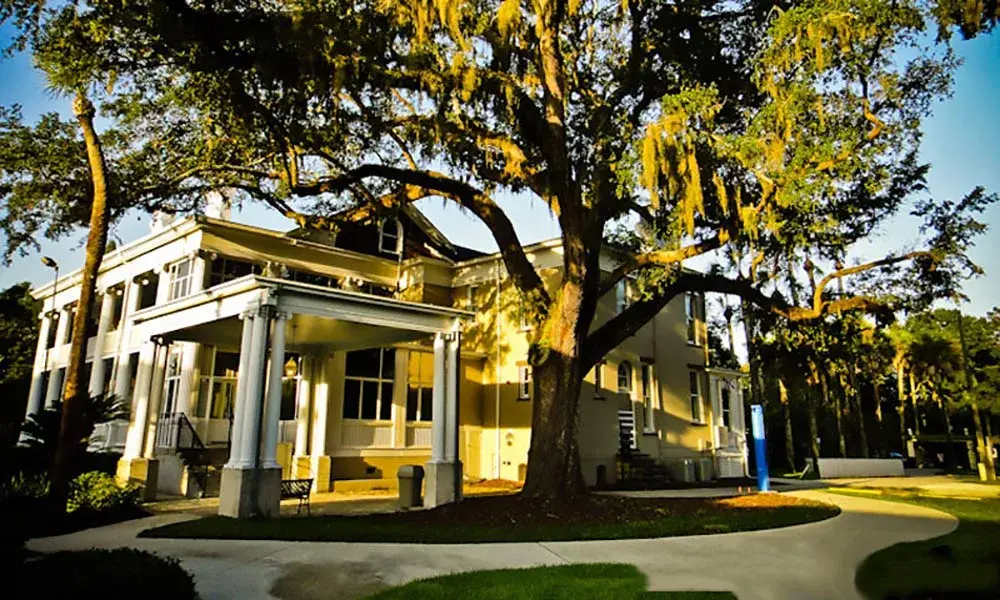
Photo credit: Visit St. Augustine
“That's one of the most magnificent trees that gets overlooked on campus,” he said. “I asked Dr. Proctor and Dr. Abare if they wanted to save the tree, and they were all for it. They allowed me to do soil mitigation, decompaction, and remove all the [concrete] parking areas that were [obstructing its base/ root system].”
Conlon's career is driven by his expertise and passion for educating others about horticulture and arboriculture.
“The campus [also] holds a special place in my heart, not only for its beauty but also for its rich history,” Conlon said. “My connection to Flagler is further strengthened by my wife, Michelle, and two of her siblings, who have attended the College.”
As a Flagler tree historian, Conlon shared insights about the iconic palm garden, planted near the start of the 20th century, just decades after the Hotel Ponce de Leon was built.
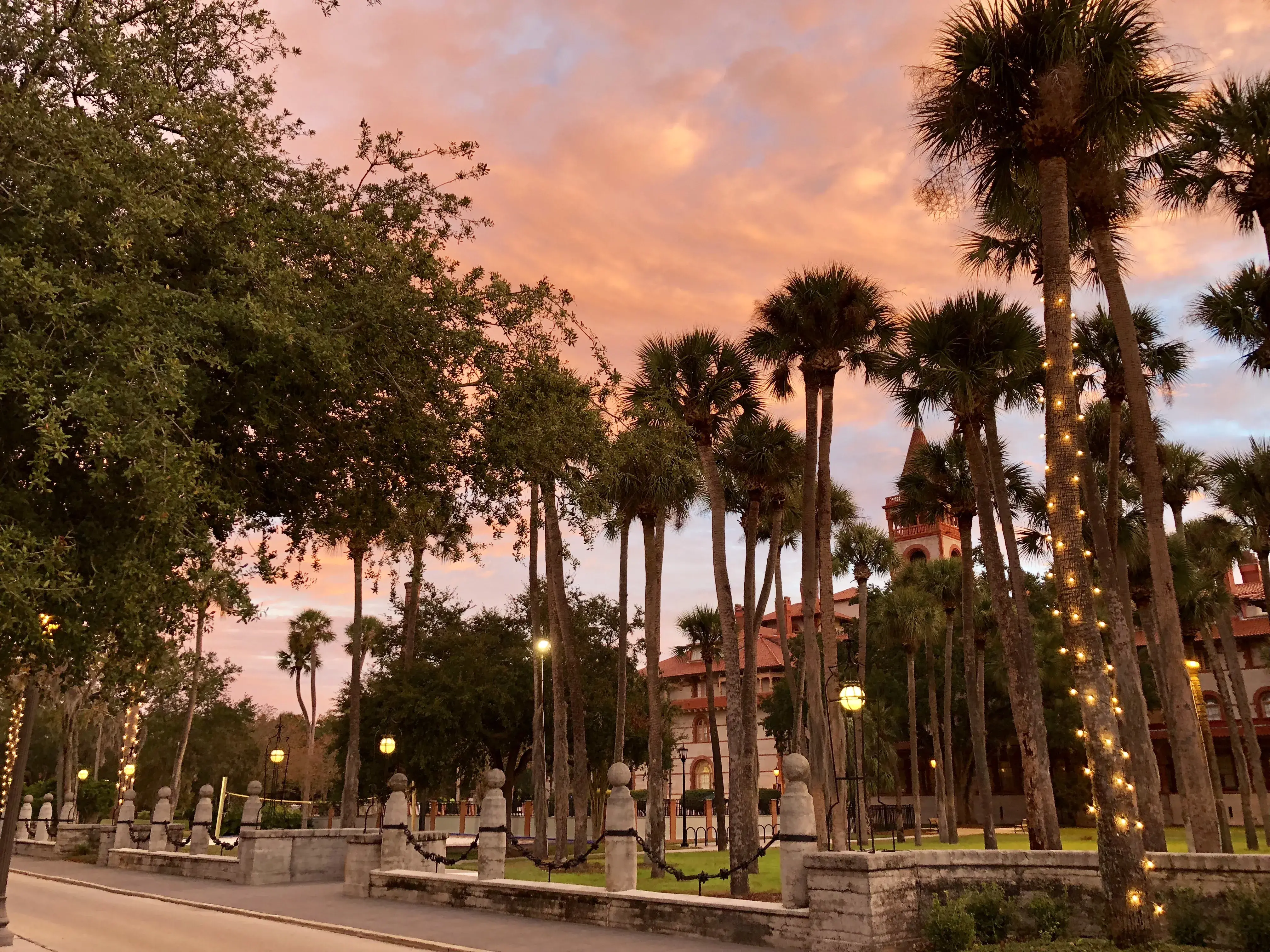
Flagler College Palm Garden at sunset (2019)
“There are pictures in the 1920s showing the trees at about six to 10 feet, which is about the size necessary to plant and maintain a Sabal Palm,” Conlon explained. “Then others were planted and replaced over the last hundred years. I have been there for the planting of 15 of those over the last 30 years.”
Recently, several palms were removed after being assessed as at or near the end of their life. Many of these trees already had preexisting demo permits before the renovation was planned. The removal was strategically timed to coincide with the west wing renovations of the Ponce, which began in May 2024, minimizing disruption to campus activities. The City of St. Augustine granted permission for the tree removal, and the plans received approval from the City’s Historic Architectural Review Board (HARB).
"We will be re-planting all the palm trees, plus a few more, in the grove," Conlon assured.
The re-planting will include hammock posts to prevent mechanical erosion, which damaged the previous palms. "They will also receive irrigation for the first time, so they’re going to respond better [to the environment of the garden area]," he added.
This initiative is just one example of how Conlon aids the College in actively managing its urban forest, which faces environmental stressors like saltwater intrusion during flooding and regional diseases.
Sunny St. Augustine may be known for its beaches’ coastal allure, but its majestic tree canopy earned our historic town one of the longest-standing “Tree City USA” designations in the State. Last Fall, Flagler was named a Tree Campus by the National Arbor Day Foundation, adding to the City’s distinguished rank.
Pictured below (left to right): Chris Bodor, Don Spence, Joe Bruce, & Eddie Conlon
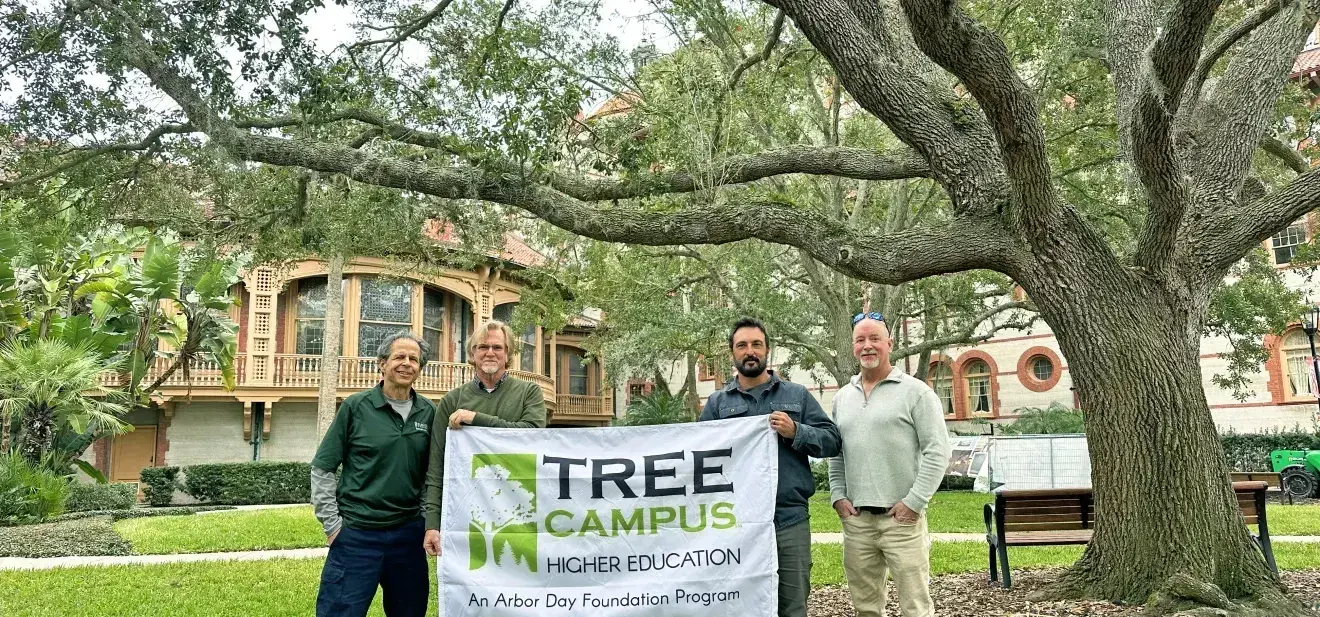
“Each tree has its lifespan, and we need to create environments where our trees can thrive and everyone can enjoy them,” said Conlon, the public representative for Flagler’s Tree Campus Advisory Committee. “When a tree passes, we plant another. That’s exactly where we are on campus now, and it’s been wonderful to see everyone on board and becoming a Tree Campus.”
This distinction underscores the College's dedication to not only preserving its historical heritage but also enhancing its environmental stewardship. The Committee is tasked with reviewing the canopy coverage every two years to ensure the health and diversity of the campus trees.
“Healthy, vibrant trees are a hallmark of a beautiful college campus,” according to the program’s webpage. “The Tree Campus program gives higher education leaders a framework and support to create and sustain that environment on their campuses.”
In honor of Arbor Day and as part of the College’s annual Science Week, the Tree Advisory Committee held a tree planting event, showing their commitment to the Tree Campus program.
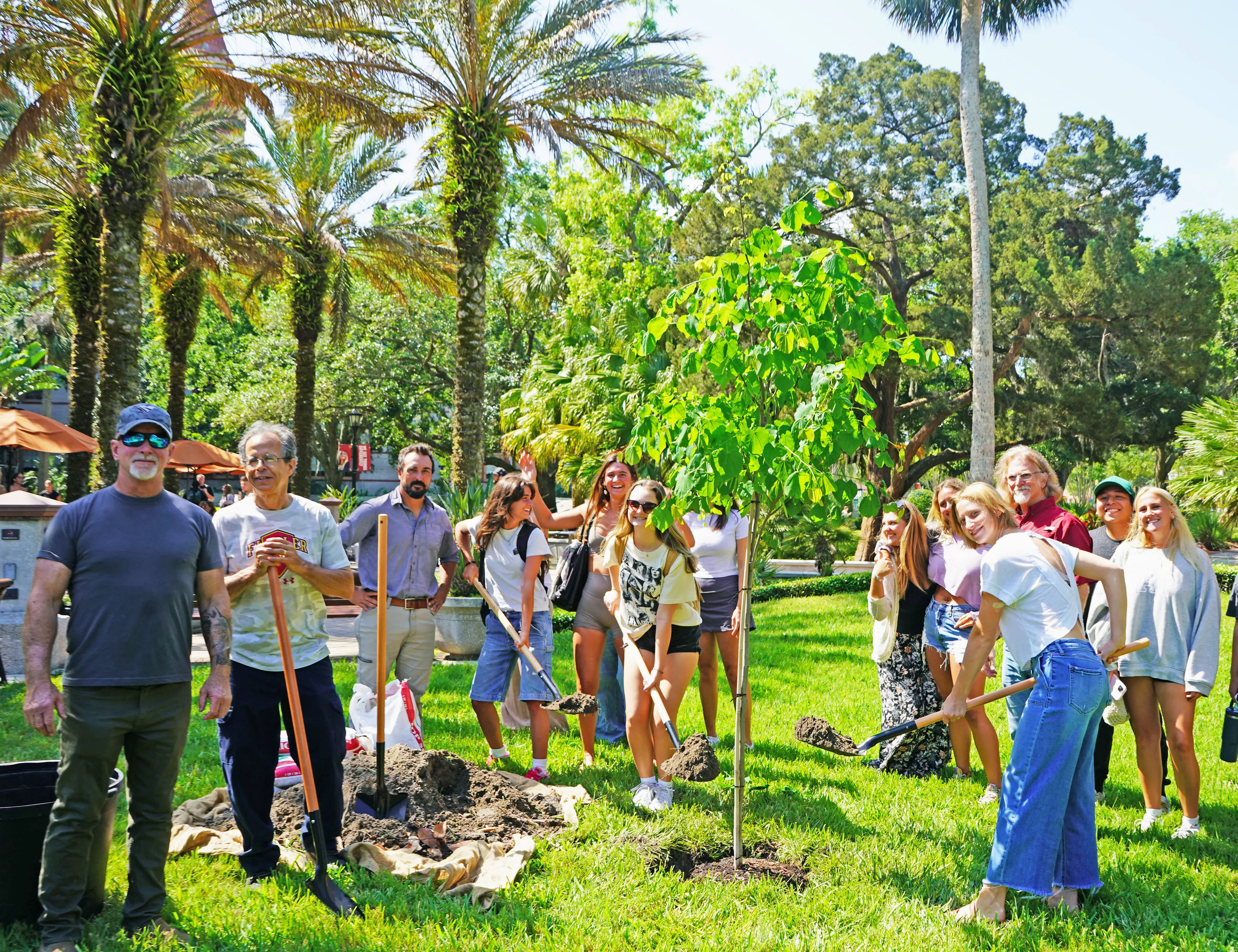
Pictured (Left to right): Conlon, Bodor, Bruce & Spence
Students, including Bethany McMahon from Professor Don Spence's "Think globally, act locally" class, participated in planting an American Redbud, a native tree with deep-pink flowers that bloom in early spring. This was part of a broader initiative to facilitate student urban forestry research and track the health of new tree installations.
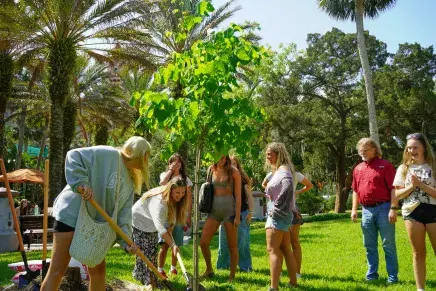
“When I come back in twenty years as an alumna, I can tell my kids or significant other: ‘Look, I helped plant this tree!’” McMahon said with a smile.
Dr. Spence, who is the Chair of the Tree Advisory Committee and an Assistant Professor, worked with the committee, the Natural Sciences Department, and the Science Week Committee to organize the tree planting. Student engagement in tree stewardship began with landscape evaluations last fall and continues each semester with initiatives like a project focused on creating a walking guide of the campus trees.
One component of the Tree Campus Higher Education Application was to demonstrate that the College incorporates the importance of trees into its curriculum. As part of this effort, Flagler students also participated in a service-learning project last September, learning about tree biology and mensuration techniques.
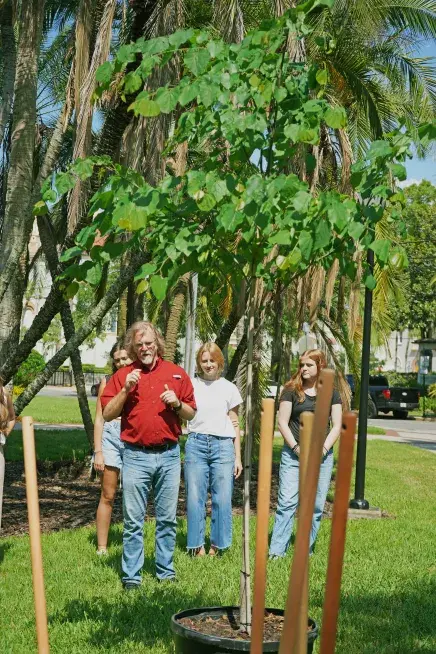
Another example is Spence’s use of the idiom "right plant, right place" in his courses when thinking about future tree planting on campus. His instruction support student research into plants and the importance of using native species to provide an ecologically sustainable landscape.
Executive Director of Facilities Joe Bruce said he always tries to think 15 years ahead when planning a new tree planting and follows the “2:1 rule,” replacing any one removed campus tree with two elsewhere on campus. Staff members like Bruce and Grounds Manager Chris Bodor have been influential in implementing the College’s tree management plan, a requirement of the Tree Campus designation.
Bruce noted that such efforts are “variants of” existing practices they had in place before Spence led their application for the designation.
For over a decade, Conlon has led efforts to protect and nurture the College's trees, including installing lightning protection, erecting protective fencing, enhancing soil quality, monitoring tree health, and replacing old trees.
Additionally, he aids in the treatment non-native palms with oxytetracycline injections to prevent Lethal Bronzing, a disease caused by a pathogen closely related to bacteria.
These injections, according to Professor Spence, are essential treatments that must be administered at least three times a year to ensure the palms' survival.
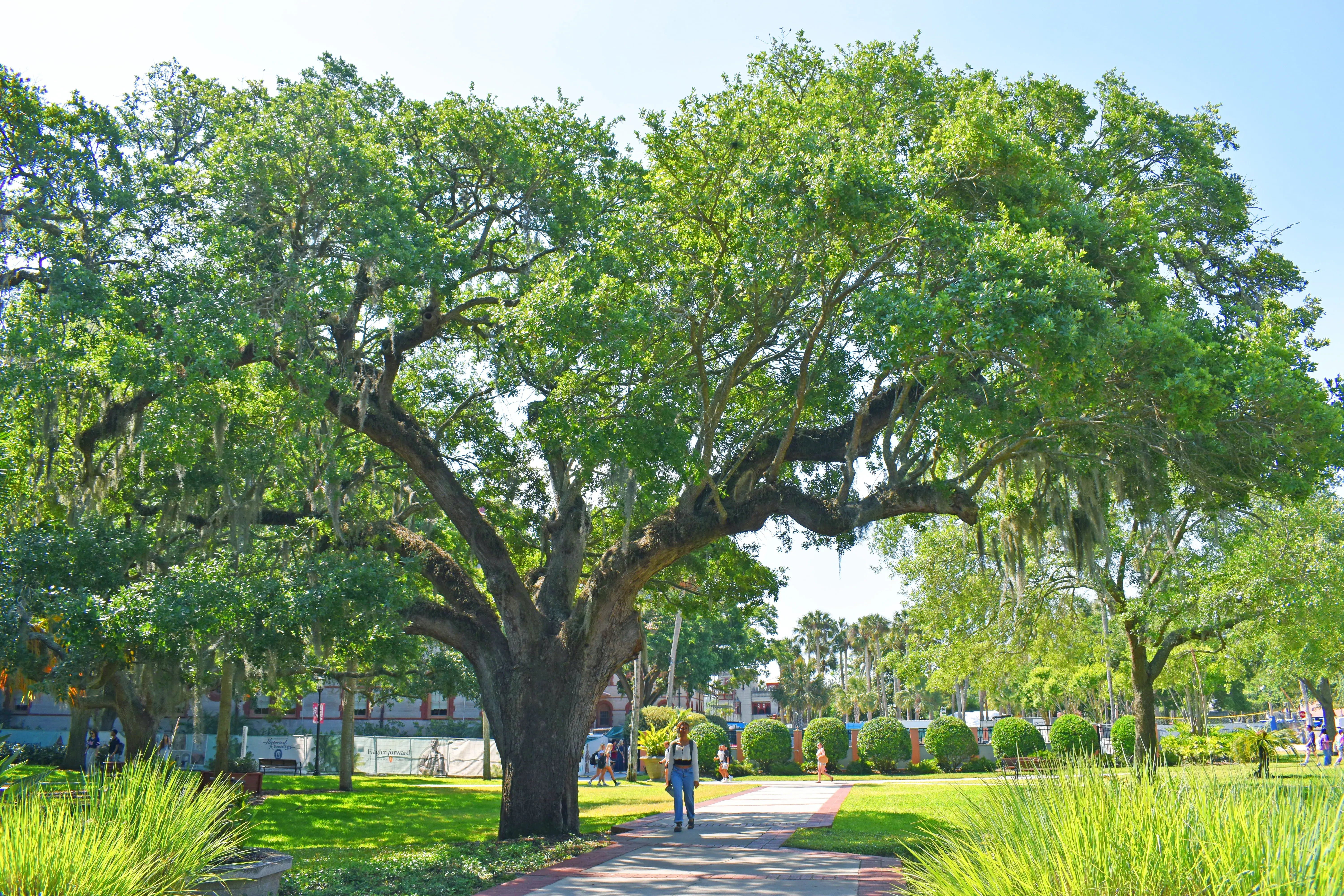
One example of Conlon’s care is the majestic oak tree near the West Lawn Gazebo, which faced stress from soil compaction and root damage. Conlon implemented a care plan that included soil decompaction, root aeration, and a specialized irrigation system.
His efforts have not only preserved this widely loved tree but also highlighted the importance of proactive tree care in maintaining the campus's natural beauty. Conlon emphasized that removing a tree is a last resort, only done when it becomes a hazard to people or buildings.
“Believe me, if we’re removing a tree on campus, I’ve given every chance I can to save it,” he said, explaining his gratitude for being tasked with stewardship of the campus trees “for all these years.”
Conlon appreciates trees as steadfast landmarks for important life milestones.
“The big, sentinel trees in our lives are so important,” he said. “We come to them so we can enjoy beautiful moments with our family and nature.”
